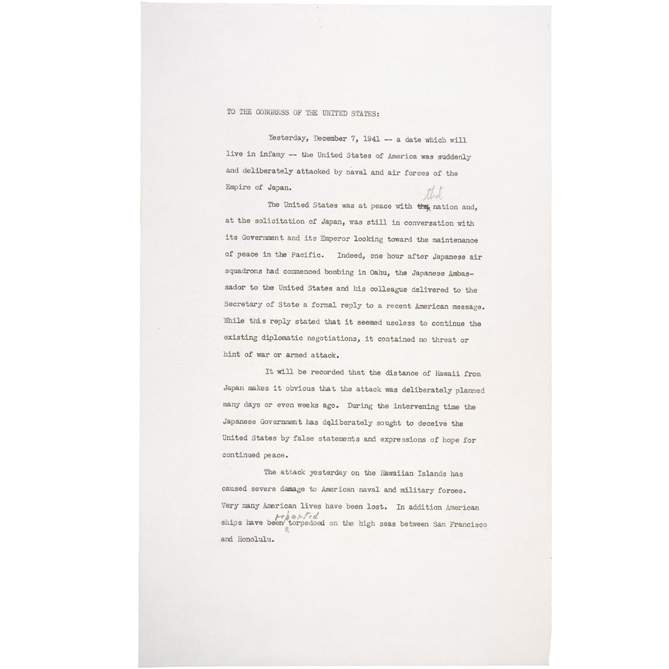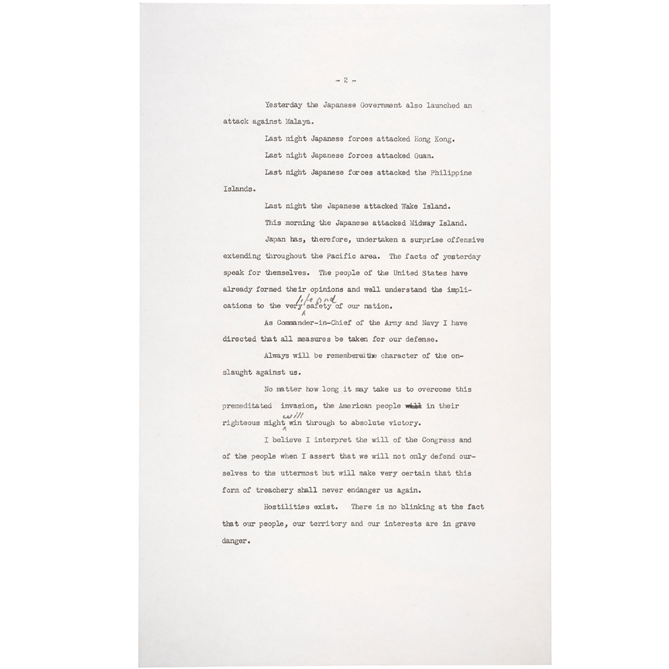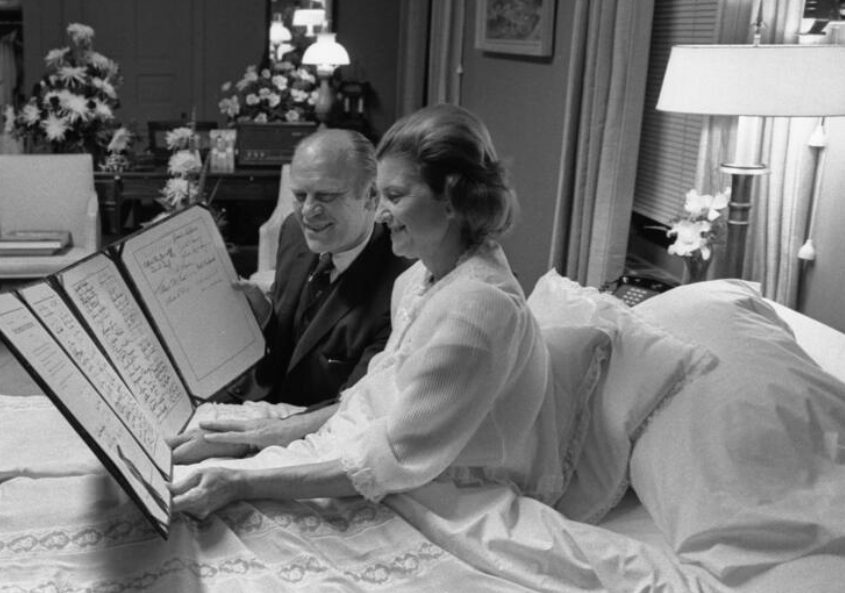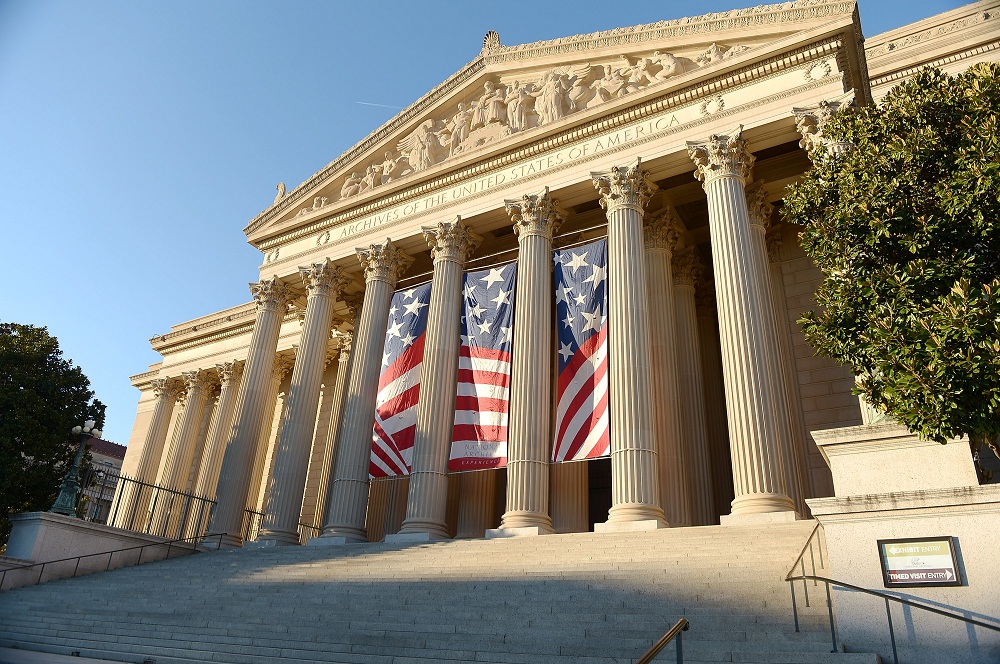At 7:55 a.m. on December 7, 1941, Japanese bombers and torpedo planes attacked the U.S. Pacific fleet anchored at Pearl Harbor, catapulting the United States into World War II. In less than 2 hours, the fleet was devastated, and more than 3,500 Americans were either killed or wounded.
Just hours after learning of the attack, President Franklin D. Roosevelt dictated this speech to his assistant “without hesitation, interruption or second thoughts,” as she later recalled. The next day, before a joint session of Congress, the President asked for a declaration of war against Japan, pronouncing December 7, 1941 to be “a date which will live in infamy.” Congress responded by immediately declaring war, and the United States entered World War II.
This short, seven-minute speech “represents the tipping point, the actual moment when the United States was transformed from an isolationist nation to a global superpower and leader of the free world,” according to Roosevelt Library Directory Paul Sparrow. In recognition of the 75th anniversary of the attack, the U.S. Senate’s copy of President Roosevelt’s speech is on display in the “Featured Documents” exhibit in the East Rotunda Gallery of the National Archives in Washington, DC, from November 10, 2016 through January 4, 2017.






President Franklin D. Roosevelt’s Day of Infamy Speech
National Archives, Records of the U.S. Senate



